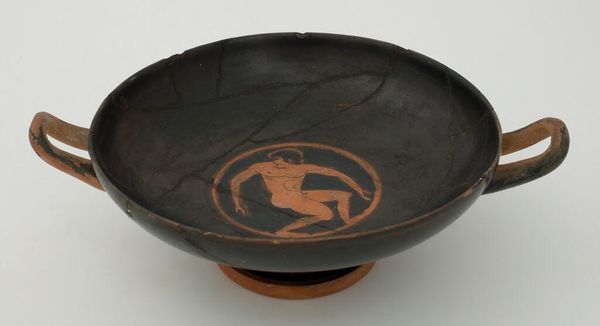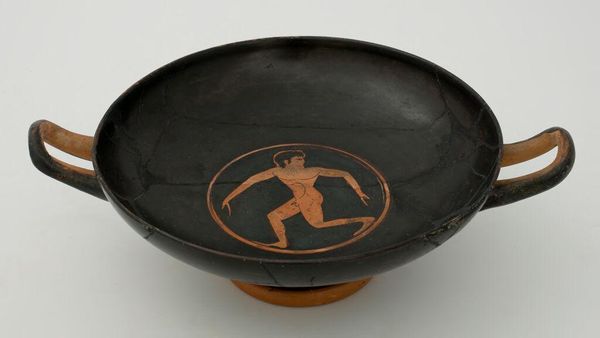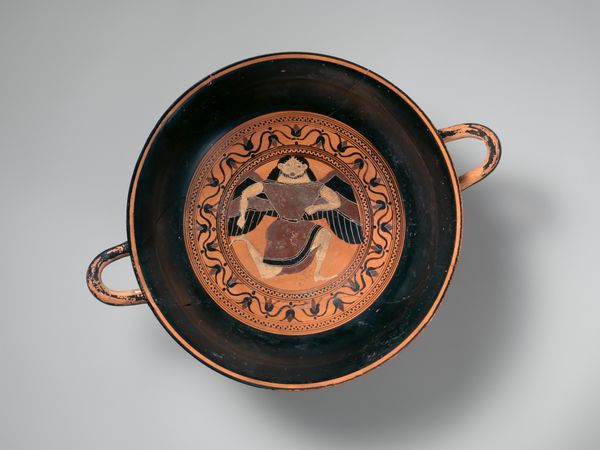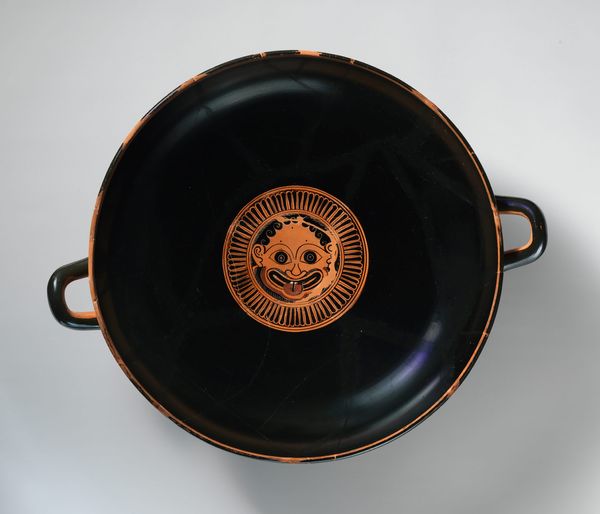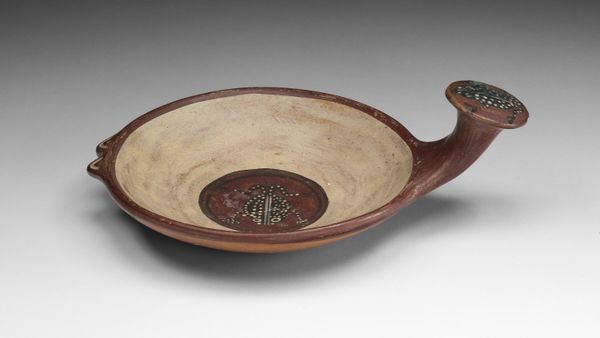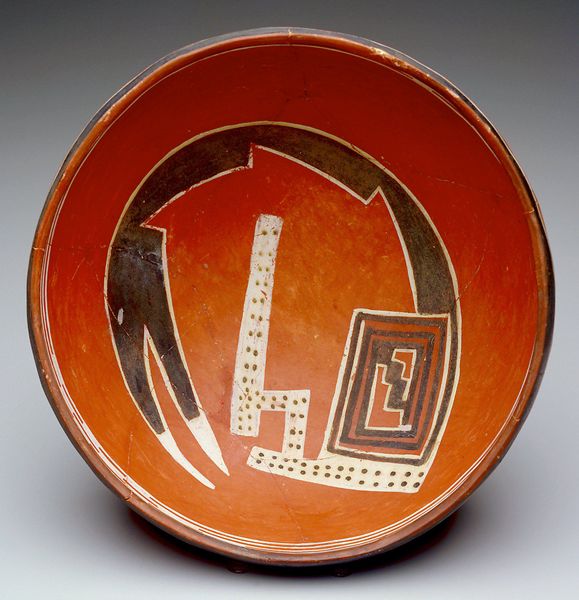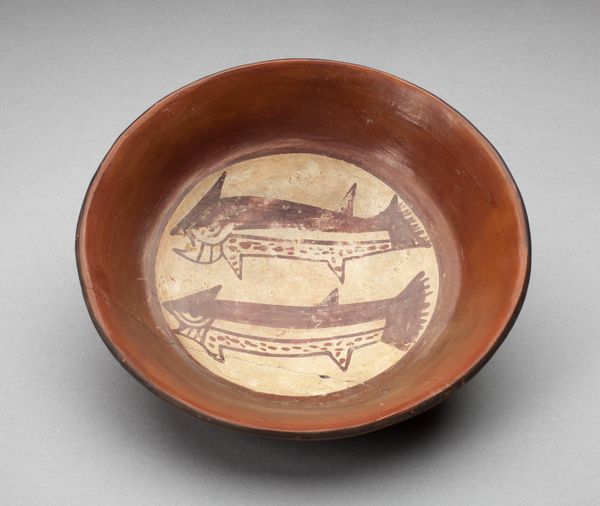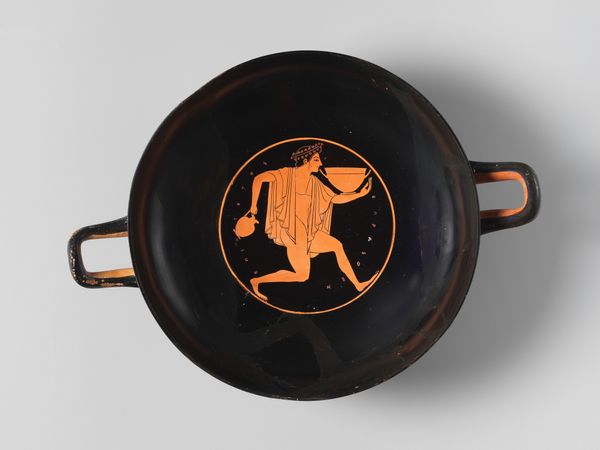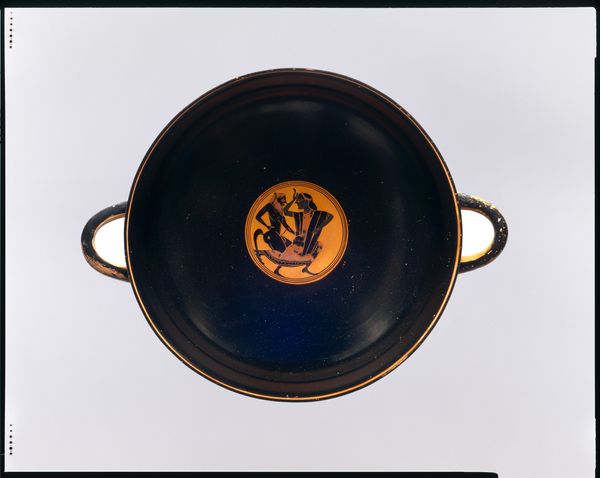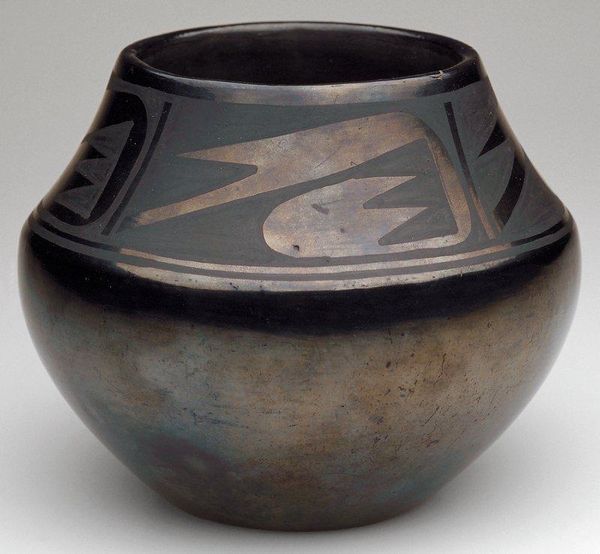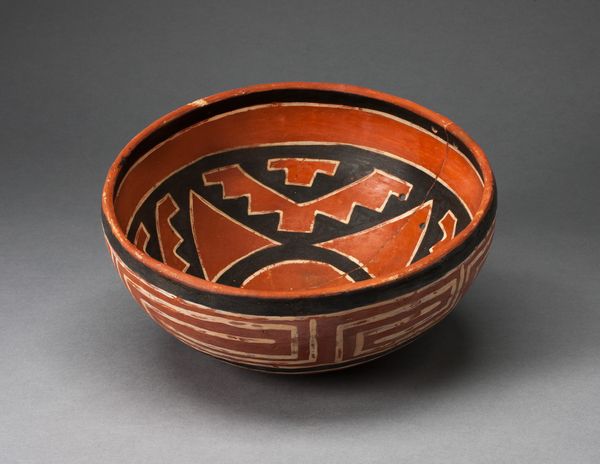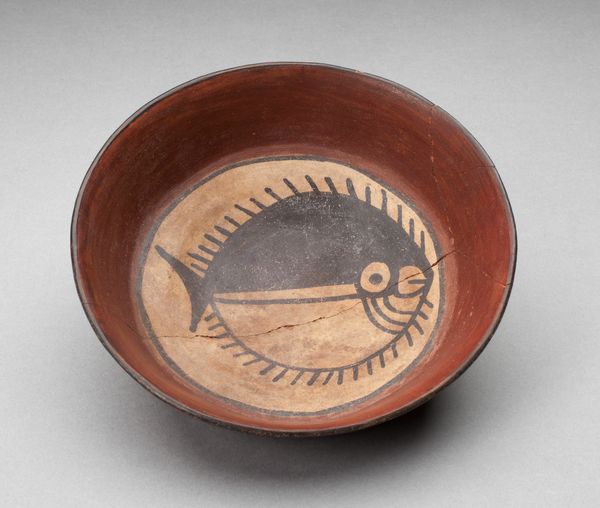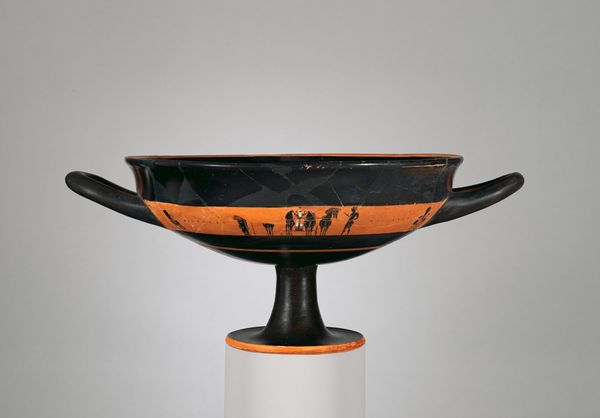
ceramic
#
3d printed part
#
product promotion photography
#
cake food
#
lifestyle product photography
#
ceramic
#
culinary art
#
food illustration
#
stoneware
#
ceramic
#
product photography
#
food photography
Dimensions: 3 11/16 x 12 in. (9.4 x 30.5 cm) (with handles)
Copyright: Public Domain
This red-figure kylix, or drinking cup, was made in ancient Greece, around the 5th century BC and is attributed to the Villa Giulia Painter. Consider the social context of Athenian symposia – gatherings of men for drinking, conversation, and philosophical discussion. The image inside creates meaning through its visual codes, referencing the symposium's rituals. The reclining figure, the wine jug, and the presence of a staff all point to the leisurely, intellectual atmosphere of these events. Ancient Greece consisted of city-states that had very specific cultural and political institutions that influenced the artwork. Athenian democracy shaped the values and ideals celebrated in art. This kylix, then, wasn't just a drinking vessel; it was a cultural artifact reflecting and reinforcing the social norms and values of its time. Historians use archaeological findings, written texts, and comparative analysis to understand the symbolism and cultural context of pieces like this. We recognize that the meaning of art is always contingent on its social and institutional context.
Comments
minneapolisinstituteofart almost 2 years ago
⋮
The Villa Giulia Painter was the chief representative of an academic group that specialized in painting calm, harmonious scenes. The inside scene depicts a seated youth holding a staff. His athletic equipment--bathing sponge; an aryballos, a round, short-necked jar containing rubbing oil; and a curved metal strigil, used for scraping oil and moisture off the skin after exercising--hangs on the wall of the gymnasium. A shortened form of the kalos, or "love name," eolais appears above the seated youth. Vase painters commonly added these terms of endearment to acknowledge some athlete or youth popular at the time. The names were not necessarily related to the scenes depicted.
Join the conversation
Join millions of artists and users on Artera today and experience the ultimate creative platform.
